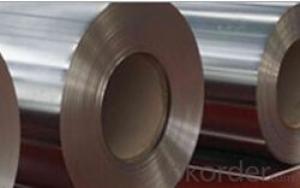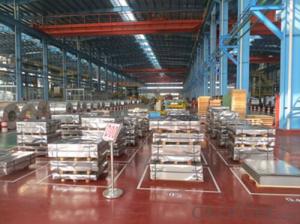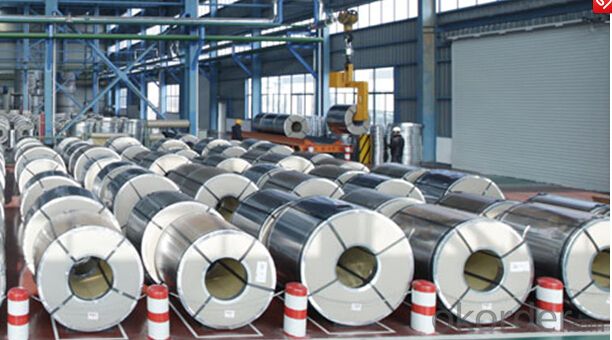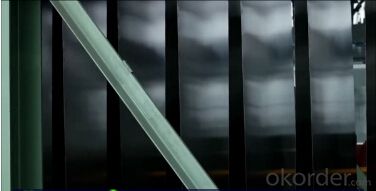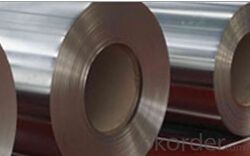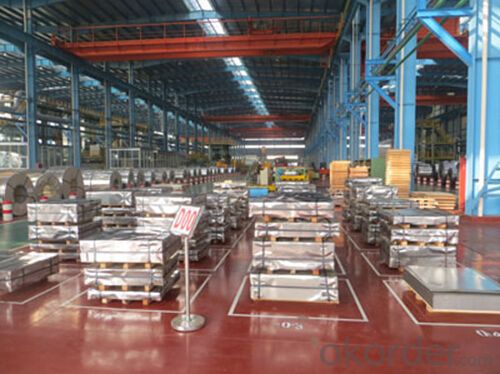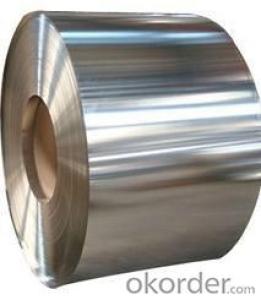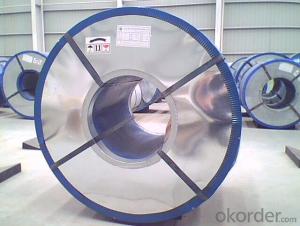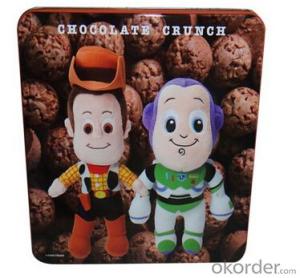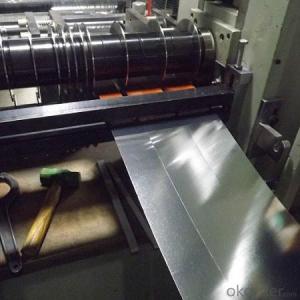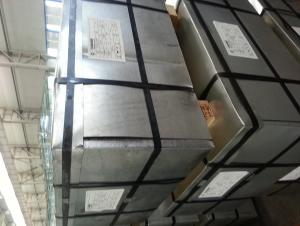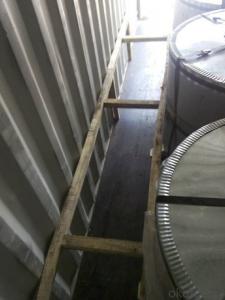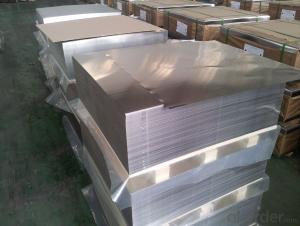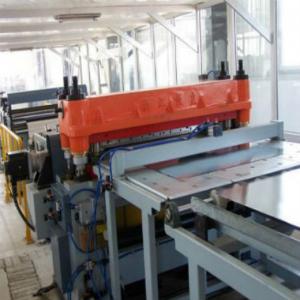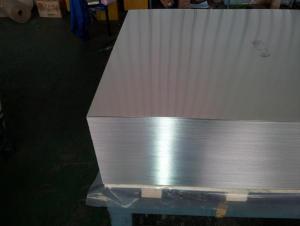Tinplate for American Market with High Tin Coating
- Loading Port:
- Shanghai
- Payment Terms:
- TT OR LC
- Min Order Qty:
- 25 m.t.
- Supply Capability:
- 1000 m.t./month
OKorder Service Pledge
OKorder Financial Service
You Might Also Like
1.Structure Description
Electrolytic Tinplate Sheets is one of the metal packing materials, which is widely used for making painting cans ,chemical package cans , electrical cable ,battery and metal printing etc.
2. Main Features
Steady and high quality
Fast shipment
Good experience for export work
For the surface, Plate uniform in thickness,uniform and smooth tin coating, without flaws,rusts,scratch,wave,nick of tin coating etc.
Price competitive
3.Images
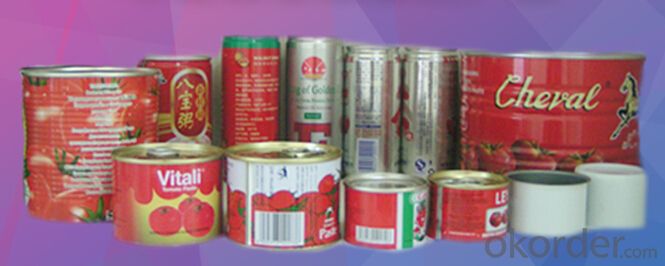
4. Specification
Standard : GB2520-2000 ,JIS G3303
Steel type : SPCC,MR
Coating : 2.8/2.8
Surface: Bright, Stone ,
Thickness:0.18
Width :600MM~1000MM
Temper : T1~T5,DR8
Package: tinplate wrapped completely with an inner cover of plastic or waterproof papers with vorners protected with metal angels.
5.FAQ
A. What is the package of tinplate? (Referred as below)
For sheets, thin plastic film + rust-proof paper + metallic cover + metallic angles+ steel band strips + fumigated wooden pallet.
For coil, thin plastic film + rust proof paper + metallic cover + steel band strips + fumigated wooden pallet
B. The surface of tinplate could you supply?
Stone finish, Bright finish, Matte finish, Silver finish
C. What quantity is the minimum order of tinplate?
Usually, the minimum quantity is 25MT. For special case, consult with us.
D. Can it make to be BA or CA for annealing?
Yes, both can do with.
- Q: What is the shelf life of products packaged in tinplate?
- The shelf life of products packaged in tinplate can vary depending on the specific product and its storage conditions. However, tinplate is known for its excellent protection against moisture, light, and oxygen, which helps to extend the shelf life of packaged goods. Generally, products packaged in tinplate can have a shelf life ranging from several months to years, ensuring product freshness and quality for an extended period.
- Q: What are the cost considerations of using tinplate packaging?
- Some cost considerations of using tinplate packaging include the initial investment in machinery and equipment for production, the cost of sourcing and purchasing tinplate materials, and the expenses associated with manufacturing and assembly processes. Additionally, transportation costs may be higher due to the weight and volume of tinplate packaging compared to other materials. However, tinplate's durability and potential for recyclability can offer long-term cost savings and environmental benefits.
- Q: Can tinplate packaging be used for industrial products?
- Yes, tinplate packaging can be used for industrial products. Tinplate is a durable and versatile material that provides excellent protection and preservation for various industrial goods. It is commonly used for packaging chemicals, paints, lubricants, and other industrial products due to its resistance to corrosion, moisture, and impact. Additionally, tinplate packaging can be easily customized to meet specific industrial requirements, making it a suitable choice for such applications.
- Q: Can tinplate be used for packaging of chemicals?
- Yes, tinplate can be used for the packaging of chemicals. Tinplate is a durable and corrosion-resistant material that can withstand the harsh conditions and potential reactivity of certain chemicals. It provides a protective barrier against moisture, oxygen, and light, ensuring the integrity and safety of the packaged chemicals. Additionally, tinplate is also recyclable, making it an environmentally friendly choice for chemical packaging.
- Q: How does tinplate contribute to the safety of automotive components?
- Tinplate contributes to the safety of automotive components in several ways. Firstly, tinplate is highly resistant to corrosion, which helps protect automotive components from rust and deterioration. This ensures that critical parts, such as brake lines or fuel tanks, remain in good condition, reducing the risk of failure and potential accidents. Additionally, tinplate's strength and durability make it suitable for impact-sensitive components, like car body panels or engine parts, providing an extra layer of protection in case of collisions. Lastly, tinplate's ability to withstand high temperatures and its fire resistance properties make it an ideal material for automotive components that may be exposed to extreme heat or fire hazards, further enhancing safety in the event of accidents or emergencies.
- Q: What are the main factors affecting tinplate coil storage?
- The main factors affecting tinplate coil storage include temperature, humidity, exposure to moisture, cleanliness of the storage area, and proper stacking techniques.
- Q: What are the limitations of printing on tinplate?
- There are several limitations to printing on tinplate. Firstly, tinplate is a relatively rigid material, making it difficult to print on curved surfaces or complex shapes. Additionally, the smoothness of the tinplate surface can pose challenges for adhesion and ink absorption, which may result in poor print quality or color accuracy. Furthermore, the printing process on tinplate is often limited to a single color or a limited color palette, which can restrict the design options and creativity. Lastly, the durability of the printed design on tinplate may be compromised over time due to exposure to external factors such as moisture, heat, or scratching.
- Q: How is tinplate cleaned and maintained?
- Tinplate is commonly cleaned and maintained by wiping it with a damp cloth or sponge using mild soapy water to remove any dirt or stains. It is important to avoid using abrasive cleaners or scrubbing brushes as they can scratch the surface. To maintain its shine and prevent corrosion, it is recommended to dry the tinplate thoroughly after cleaning and store it in a dry place away from moisture. Additionally, applying a thin coat of oil or wax can help protect the tinplate from rusting.
- Q: Can tinplate be used for tobacco packaging?
- Yes, tinplate can be used for tobacco packaging. It is a commonly used material due to its durability, ability to preserve the product's freshness, and its ability to protect against moisture and external factors. Additionally, tinplate can be easily decorated and customized to create attractive packaging designs for tobacco products.
- Q: How does tinplate affect the overall branding of products?
- Tinplate can significantly impact the overall branding of products as it offers various advantages. Its sleek and glossy appearance adds a premium and sophisticated touch to the packaging, enhancing the perceived value of the product. Additionally, tinplate provides excellent protection against moisture, light, and oxygen, ensuring the quality and freshness of the contents. This durability and protective feature associated with tinplate packaging help to build trust and credibility among consumers, reinforcing the brand image. Furthermore, tinplate's versatility allows for unique and eye-catching designs, facilitating differentiation and attracting consumers' attention on store shelves. Overall, tinplate plays a crucial role in elevating the branding of products, creating a memorable and positive consumer experience.
Send your message to us
Tinplate for American Market with High Tin Coating
- Loading Port:
- Shanghai
- Payment Terms:
- TT OR LC
- Min Order Qty:
- 25 m.t.
- Supply Capability:
- 1000 m.t./month
OKorder Service Pledge
OKorder Financial Service
Similar products
Hot products
Hot Searches
Related keywords


